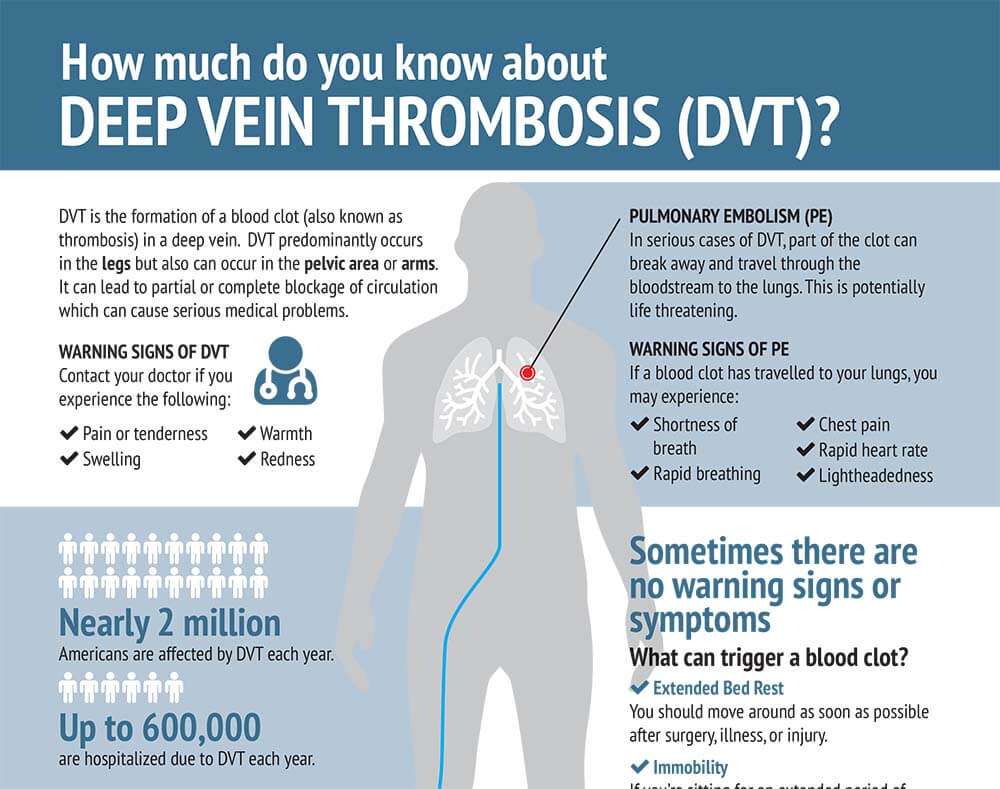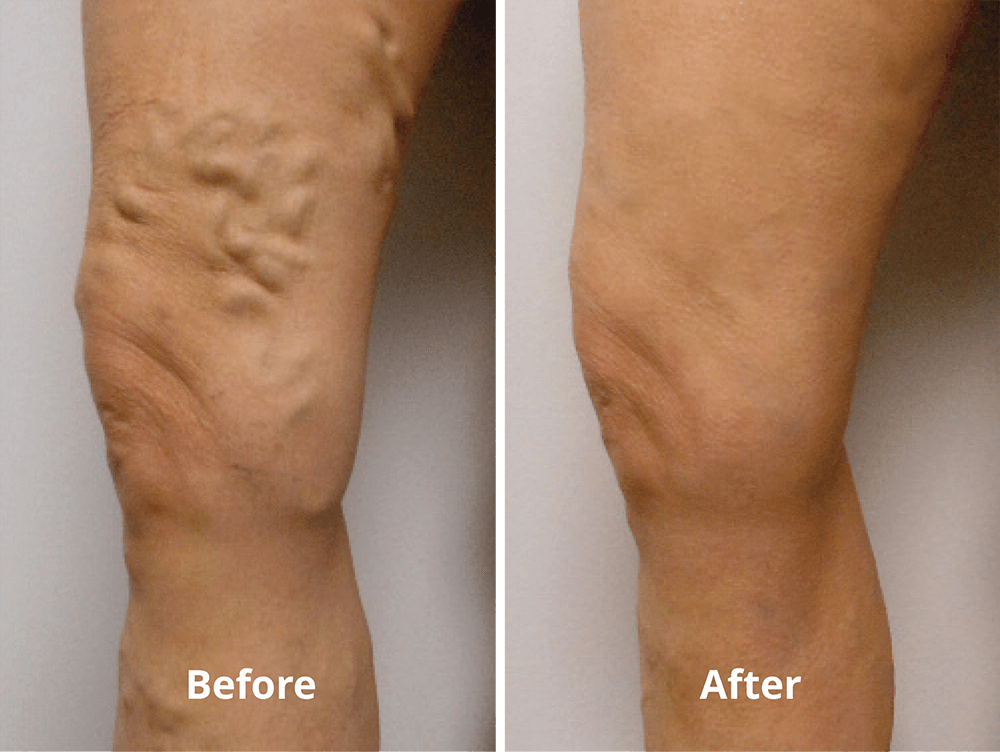Deep Vein Thrombosis DVT
What is Deep Vein Thrombosis DVT?
When a clot forms in the deep vein system it is called a deep vein thrombosis, or DVT. DVTs usually occur in the lower extremities, but they can appear in other parts of the body. The venous system of the lower extremity is divided into the superficial veins, which include the great and small saphenous veins and their associated accessory tributaries and the deep venous system, which includes the femoral and popliteal veins. Intermediate veins called perforators connect them. DVT can lead to partial or complete blockage of circulation which can cause serious medical problems. Nearly 2 million Americans are affected by DVT each year.

Symptoms of DVT
Sometimes there are no warning signs or symptoms of DVT.
As much as 50% of patients with a DVT show no symptoms at all. These silent DVTs can resolve without treatment or may lead to complications such as a Pulmonary Embolism (PE). A PE is a dangerous condition because it can damage the lungs and other organs and is life-threatening. Warning Signs of DVT Contact your doctor if you experience any of the following:
- Pain or tenderness
- Warmth
- Swelling
- Redness
How Much Do You Know About Deep Vein Thrombosis DVT?
Did you know that nearly 2 Million Americans are affected by Deep Vein Thrombosis DVT each year? Or that up to 600,000 are hospitalized and 100,000 die each year from DVT/PE? To protect yourself, it’s important to know the facts about DVT and how to prevent it. Download our Deep Vein Thrombosis DVT Infographic (shown above) print it off and share it with your loved ones. Help us spread the word! When a DVT develops, there is a chance that a clot can break off and enter the pulmonary vasculature, known as a pulmonary embolus (PE)-which can be a life-threatening complication.
How Are They treated?
See your doctor right away if you have a red, swollen or tender vein. Call 911 if you have any symptoms of shortness of breath, knife-like chest pain on inspiration, coughing up blood, or rapid heartbeat.
Treatment Overview
Your healthcare provider may order additional labwork and obtain imaging, including Duplex ultrasonography to better visualize and diagnose Deep Vein Thrombosis DVT, in conjunction with history-taking and physical exam. Depending on results, anti-inflammatories (NSAIDs) and compression stockings may be utilized for superficial thrombophlebitis. Anticoagulation (blood thinner) medication is utilized if there is a presence of an Acute Deep Vein Thrombosis DVT or if an SVT is showing evidence of encroaching on the deep venous system.
IVS Treatment Approach
At Indiana Vein & Lymphatic, we understand the serious impact that Deep Vein Thrombosis DVT has on our patients and their families. As underlying venous disease can play a significant role in the majority of patients who have been affected by Deep Vein Thrombosis DVT, we will collaborate with your referring physician to determine the best care plan for you.
About the Treatments and Risk Factors
Risk Factors You Control
This list is not all-inclusive, but some of the risks within your control are:
- Cigarette smoking
- Obesity
- Oral contraceptives/”birth control” pills
- Long plane rides or car trips (usually longer than four hours)
- Inactivity (sedentary lifestyle)
Risk Factors Beyond Your Control
Some of the risks beyond your control:
- Heredity, Personal or Family History of DVT
- Advanced Age (over 60)
- Recent Surgery
- Congestive Heart Failure
- Active Cancer
Vein Disease Diagnosis
More
Venous Treatment Phases
More
Conservative Measures
More
Schedule a Consultation


“I can now endure intense cardio and leg workouts, and it does feel like I’ve been given a new set of legs.”
